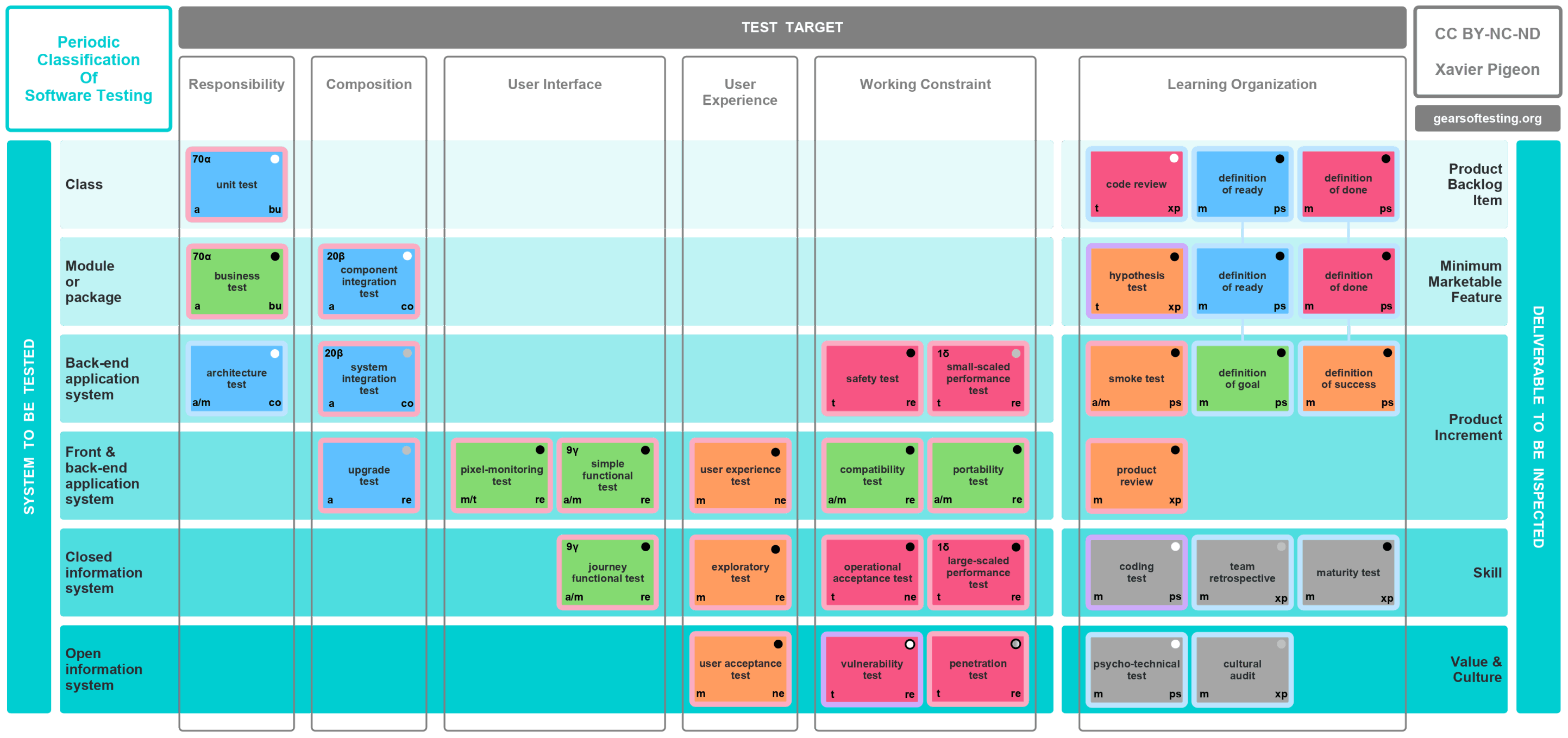
Do not just test your code,
but also the way you design software,
and the team that delivers sofware,
and the organization that creates software.

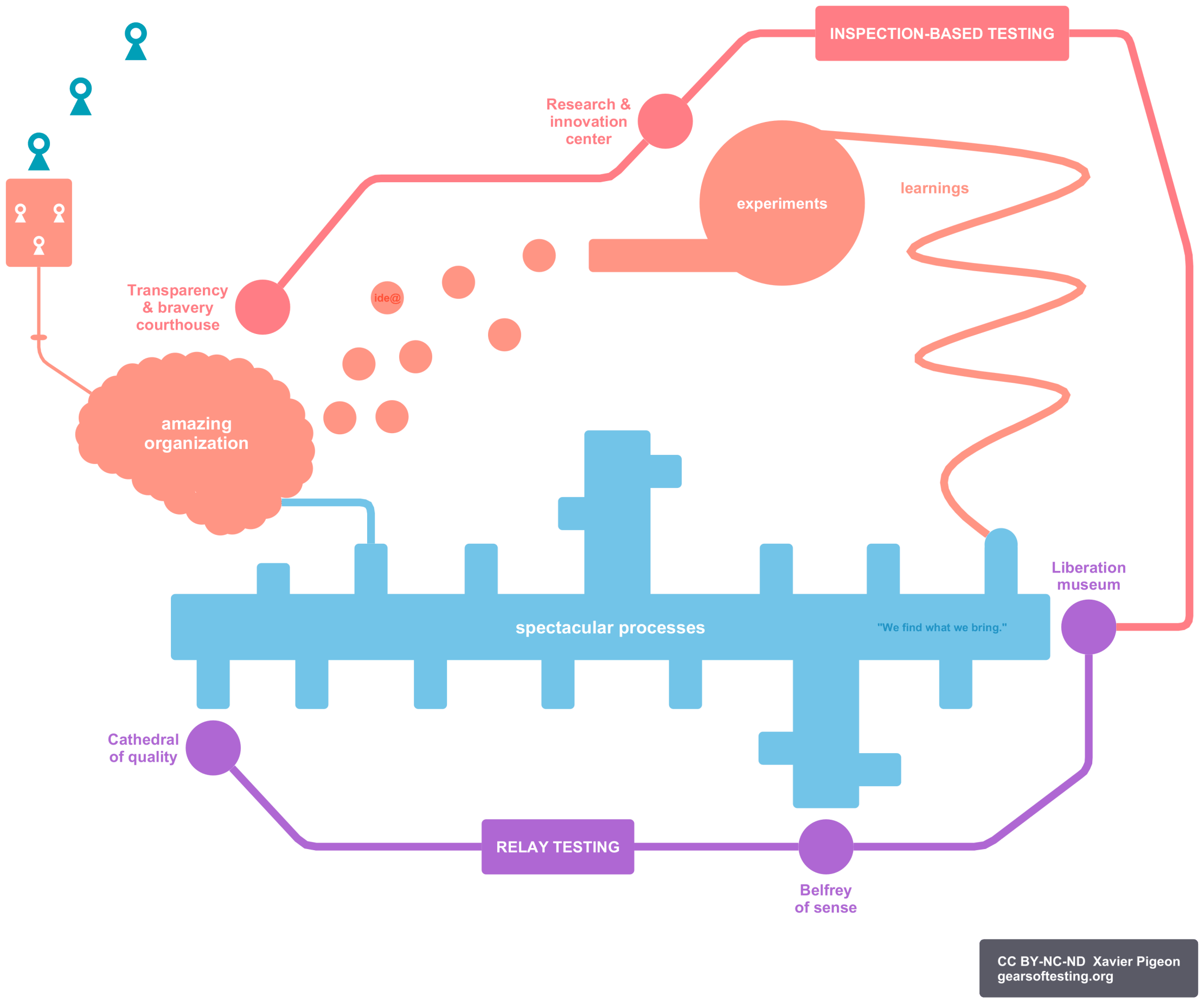
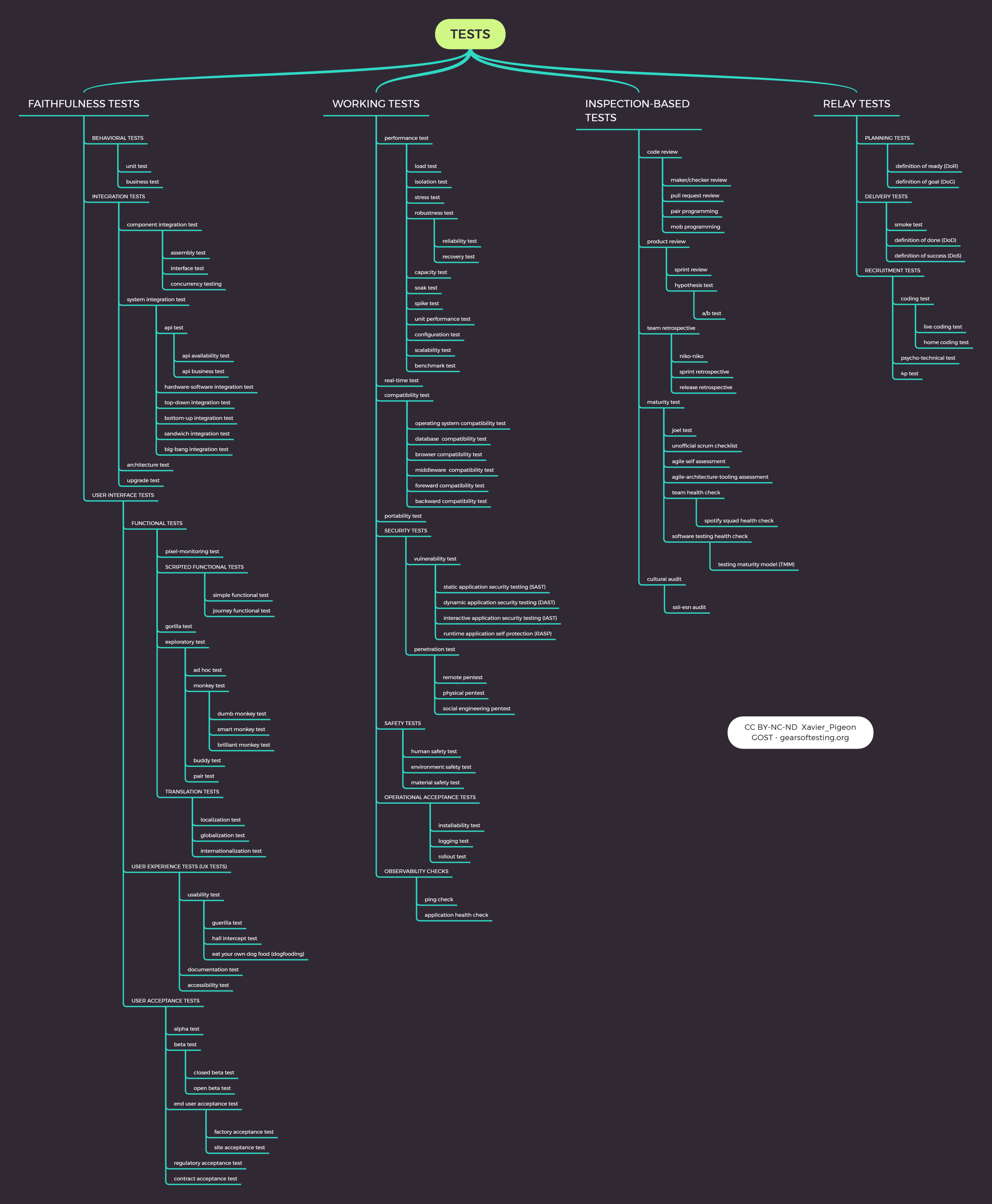
Discover adaptative strategies of testing, while building an original typology of tests, from code to learning organizations.
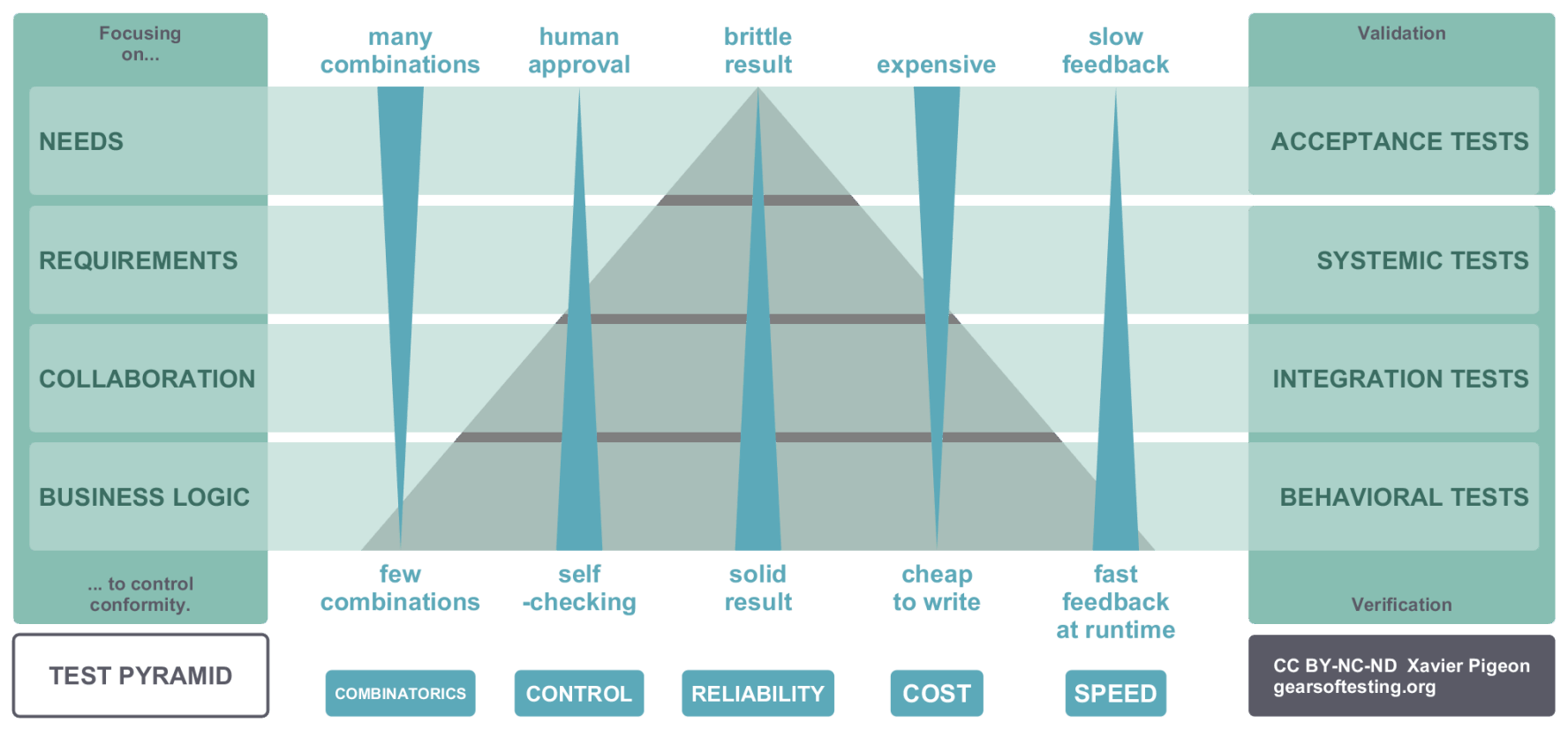
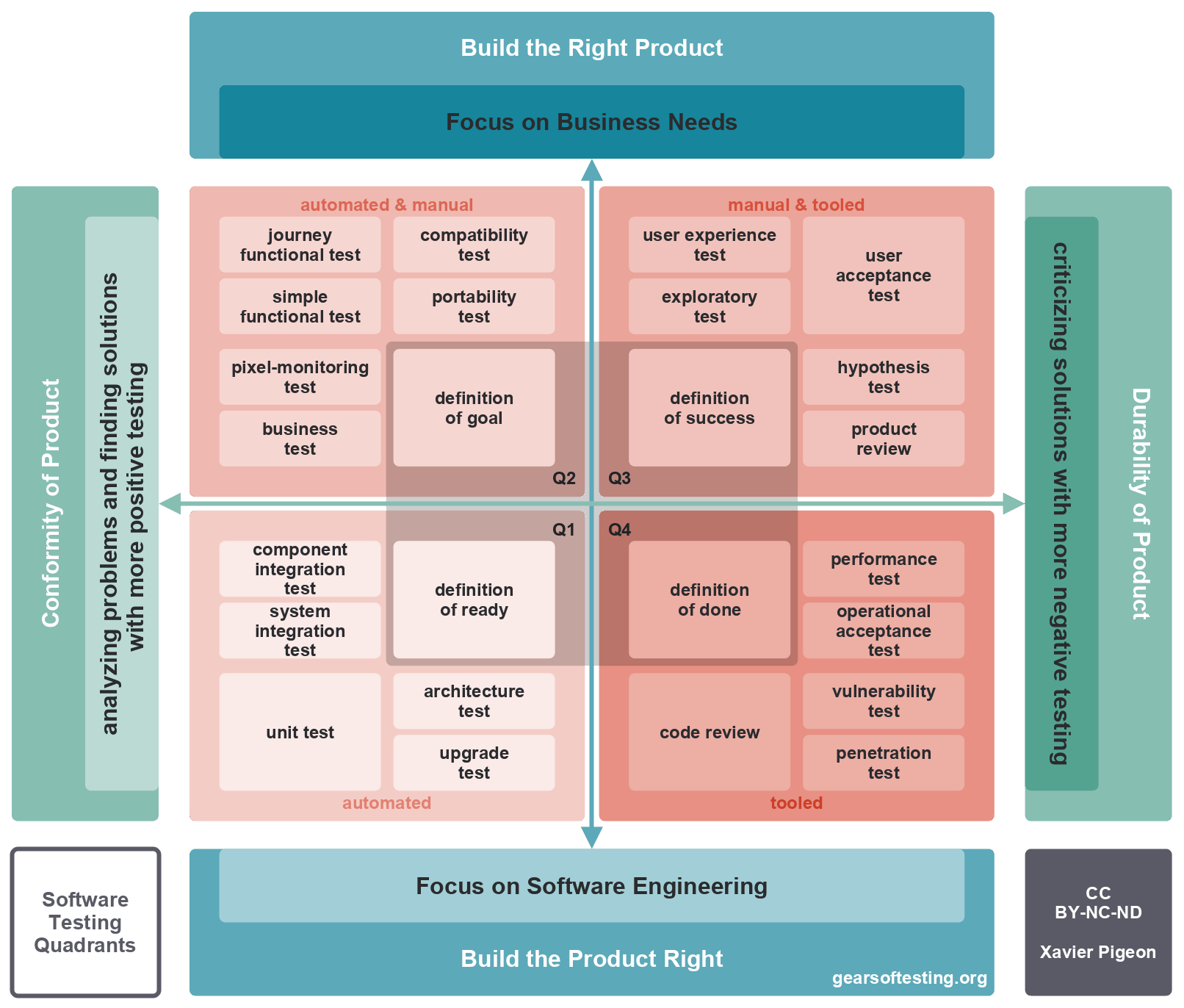
Every test in the same row (period) has the same system under test. The size of the system grows from top to bottom as the number of layers of onion. On the left of the table, such a system is a piece of software to be tested; on the right, such a system is a deliverable with added value. Incremental development crosses all layers.
Every test in the same column (group) has the same test target. Kinds of target cover all requirements to build softwares and to make organizations grow up. An expandable test (i.e. a metatest) in an open-minded, learning organization is a great way to keep practical knowledges from experiments over time and to make them actionable and shareable. Iterative development crosses all matters.

